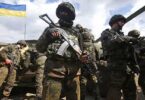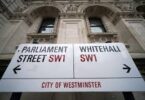Mikhail Rostovsky
“Say the password and go!” – “Password!” – “Come on!” – after the American side handed over a written response to Russian security proposals, the main character of this joke no longer seems like a complete idiot.
How is secret diplomacy usually done in the world? Here is a classic example: in 1956, big bosses from London, Paris and Tel Aviv arranged a secret rendezvous in the French city of Sèvres and agreed there to launch a military strike on Egypt at the same time. The war itself ended quickly: America threatened its younger allies with a finger, and they instantly tucked their tail. But the very fact of signing the Protocols of Sevres, their co-author, former British Foreign Secretary Selwyn Lloyd, recognized only when he was on his deathbed almost twenty years later. And their photographic copy was only published in 2010.
What is the matter of the current secret diplomacy of Putin and Biden! Guided by the principle of the well-known detective “it is necessary to hide in plain sight”, the two presidents did not even put up a sign: “Do not interfere! We’re trying to negotiate a backroom deal!”
Although, however, no, they set it. “We will not publish the document because we believe that diplomacy has a great chance of success if we leave room for confidential negotiations. We hope and expect that Russia shares our views,” this statement by US Secretary of State Tony Blinken actually performs the function of such a virtual “plaque”. And this “tablet”, in turn, has one important, useful function – useful not only for the participants in the negotiations, but also for those who, like us, are watching them from the sidelines, frantically trying to understand what is happening.
Biden’s policy towards Putin and Russia is based on the principle of nesting dolls. The upper matryoshka is available to the eyes of absolutely everyone. The President of the United States publicly flexes his muscles (of course, intellectual and ideological, not physical), publicly calls GDP a “murderer” and tells how Washington will effortlessly twist Moscow into a ram’s horn.
The medium matryoshka is only visible to Putin and a narrow group of other high-ranking Russian and American officials. According to reliable information, at the summer talks in Geneva, Biden behaved with emphatic courtesy and assured that he understood the special role of Russia in international affairs and our concerns. At the same time, however, it was emphasized that in the public plane the American leader would continue his previous line of conduct.
What is Biden’s smallest nesting doll hiding? Here, alas, stop for now. At the moment we can say absolutely nothing about its content. And perhaps even the American leader himself does not know everything yet. What kind of nesting doll he will eventually have to present to the world depends on whether there will be some kind of agreement with Russia in this very end or not. And this is still unclear.
Biden: Russia’s invasion of Ukraine will change the world
Lavrov about the American response: “There is no positive reaction on the main issue. The main issue is our clear position on the inadmissibility of NATO expansion and the deployment of strike weapons that could threaten the territory of the Russian Federation.” Another gloomy forecast by the head of the Russian Foreign Ministry, which, it would seem, kills my thesis about the “secret diplomacy of Putin and Biden” in the bud: “I have no doubt that in the very near future he will (the text of the American response. – “MK” ) become known to the general public. He “leaks”.
So, at first, two deputy ministers (Sergei Ryabkov and Wendy Sherman), and now two ministers (Lavrov and Blinken) could not agree on anything breakthrough. But could they actually agree on something? Do they deserve such achievements?
In politics, as in cinema, there is a division into main and secondary characters. The main achievements (or main villainies) are the lot of the main characters of the film. If these main characters suddenly find themselves in the shadow of supporting characters, then the whole dramaturgy falls apart. The point of our Russian-American political dramaturgy is that the main characters in our “movie” are Putin and Biden. Only they can agree on something in the final. And the failure of the ministers is an obligatory point in the program on the way to this finale. Remember the obligatory outline of any good action movie? The closer the final, the stronger the tension. It would seem that there is no way out, a happy ending is impossible. But suddenly something happens, and by some miracle everything grows together.
Am I too carried away by cinematic analogies? Perhaps everything is actually much simpler and sadder. In principle, I am not trying to predict something or convince you and myself of the inevitability of a happy ending. I am trying to prove something completely different: if there is such a happy ending, then the current emotional roller coaster is its absolutely necessary condition. The gap between the positions of Russia and the collective West is too wide. To smooth and “sew” it, Putin and Biden need emotional tension. Only in the presence of fear – what will happen if a war starts ?! – the final political compromises will have the necessary moral legitimacy. This is the only way to make these compromises without destroying your base of political support in the process (in the case of Biden; Putin has an incomparably greater margin for maneuver).
Quote from the news feed: “Russia will not rush to assess the US response on guarantees, Peskov said.” It’s a pity, it’s an infinite pity that, unlike a cinematic thriller, the “political thriller” that our life has become cannot be immediately skipped to a happy ending. But this is probably part of the price for the fact that we live not on the silver screen, but in real life.
Courtesy: (mk.ru)






